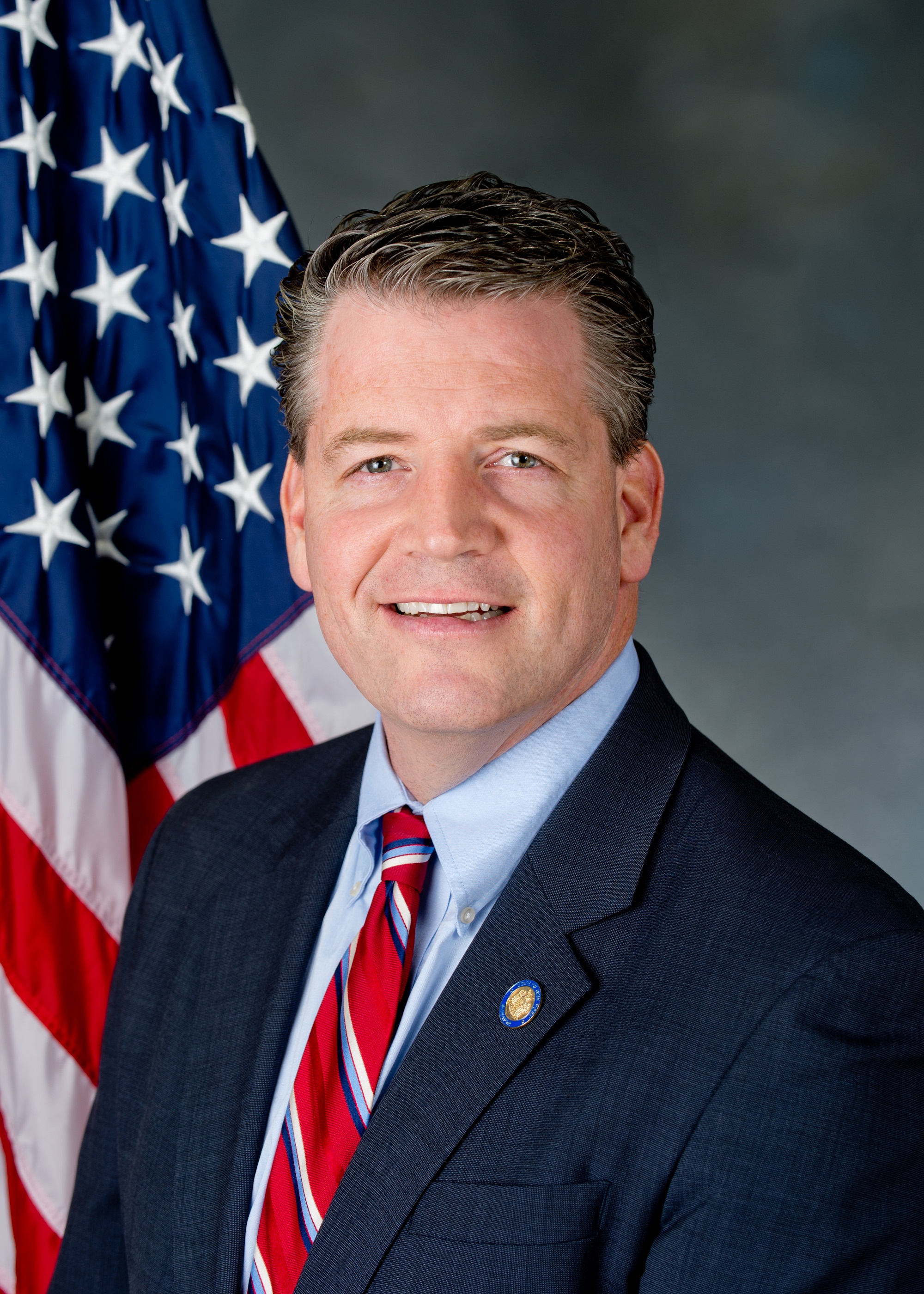S. 5988 2
PROTECTION ACT (UNITED STATES CODE, TITLE 22, CHAPTER 78) AT THE TIME OF
THE INSTANT OFFENSE.
SEX TRAFFICKING OF A CHILD IS A CLASS B FELONY.
§ 2. Section 230.30 of the penal law, as amended by chapter 368 of the
laws of 2015, is amended to read as follows:
§ 230.30 Promoting prostitution in the second degree.
A person is guilty of promoting prostitution in the second degree when
he or she knowingly[:
1. Advances] ADVANCES prostitution by compelling a person by force or
intimidation to engage in prostitution, or profits from such coercive
conduct by another[; or
2. Advances or profits from prostitution of a person less than eigh-
teen years old].
Promoting prostitution in the second degree is a class C felony.
§ 3. Sections 230.32 and 230.33 of the penal law are REPEALED.
§ 4. Paragraph (a) of subdivision 1 of section 70.02 of the penal law,
as amended by chapter 368 of the laws of 2015, is amended to read as
follows:
(a) Class B violent felony offenses: an attempt to commit the class
A-I felonies of murder in the second degree as defined in section
125.25, kidnapping in the first degree as defined in section 135.25, and
arson in the first degree as defined in section 150.20; manslaughter in
the first degree as defined in section 125.20, aggravated manslaughter
in the first degree as defined in section 125.22, rape in the first
degree as defined in section 130.35, criminal sexual act in the first
degree as defined in section 130.50, aggravated sexual abuse in the
first degree as defined in section 130.70, course of sexual conduct
against a child in the first degree as defined in section 130.75;
assault in the first degree as defined in section 120.10, kidnapping in
the second degree as defined in section 135.20, burglary in the first
degree as defined in section 140.30, arson in the second degree as
defined in section 150.15, robbery in the first degree as defined in
section 160.15, sex trafficking as defined in paragraphs (a) and (b) of
subdivision five of section 230.34, SEX TRAFFICKING OF A CHILD AS
DEFINED IN SECTION 230.34-A, incest in the first degree as defined in
section 255.27, criminal possession of a weapon in the first degree as
defined in section 265.04, criminal use of a firearm in the first degree
as defined in section 265.09, criminal sale of a firearm in the first
degree as defined in section 265.13, aggravated assault upon a police
officer or a peace officer as defined in section 120.11, gang assault in
the first degree as defined in section 120.07, intimidating a victim or
witness in the first degree as defined in section 215.17, hindering
prosecution of terrorism in the first degree as defined in section
490.35, criminal possession of a chemical weapon or biological weapon in
the second degree as defined in section 490.40, and criminal use of a
chemical weapon or biological weapon in the third degree as defined in
section 490.47.
§ 5. Paragraph (a) of subdivision 1 of section 460.10 of the penal
law, as amended by chapter 368 of the laws of 2015, is amended to read
as follows:
(a) Any of the felonies set forth in this chapter: sections 120.05,
120.10 and 120.11 relating to assault; sections 121.12 and 121.13 relat-
ing to strangulation; sections 125.10 to 125.27 relating to homicide;
sections 130.25, 130.30 and 130.35 relating to rape; sections 135.20 and
135.25 relating to kidnapping; sections 135.35 and 135.37 relating to
labor trafficking; section 135.65 relating to coercion; sections 140.20,
S. 5988 3
140.25 and 140.30 relating to burglary; sections 145.05, 145.10 and
145.12 relating to criminal mischief; article one hundred fifty relating
to arson; sections 155.30, 155.35, 155.40 and 155.42 relating to grand
larceny; sections 177.10, 177.15, 177.20 and 177.25 relating to health
care fraud; article one hundred sixty relating to robbery; sections
165.45, 165.50, 165.52 and 165.54 relating to criminal possession of
stolen property; sections 165.72 and 165.73 relating to trademark coun-
terfeiting; sections 170.10, 170.15, 170.25, 170.30, 170.40, 170.65 and
170.70 relating to forgery; sections 175.10, 175.25, 175.35, 175.40 and
210.40 relating to false statements; sections 176.15, 176.20, 176.25 and
176.30 relating to insurance fraud; sections 178.20 and 178.25 relating
to criminal diversion of prescription medications and prescriptions;
sections 180.03, 180.08, 180.15, 180.25, 180.40, 180.45, 200.00, 200.03,
200.04, 200.10, 200.11, 200.12, 200.20, 200.22, 200.25, 200.27, 200.56,
215.00, 215.05 and 215.19; sections 187.10, 187.15, 187.20 and 187.25
relating to residential mortgage fraud, sections 190.40 and 190.42
relating to criminal usury; section 190.65 relating to schemes to
defraud; any felony defined in article four hundred ninety-six; sections
205.60 and 205.65 relating to hindering prosecution; sections 210.10,
210.15, and 215.51 relating to perjury and contempt; section 215.40
relating to tampering with physical evidence; sections 220.06, 220.09,
220.16, 220.18, 220.21, 220.31, 220.34, 220.39, 220.41, 220.43, 220.46,
220.55, 220.60, 220.65 and 220.77 relating to controlled substances;
sections 225.10 and 225.20 relating to gambling; sections 230.25[,] AND
230.30[, and 230.32] relating to promoting prostitution; section 230.34
relating to sex trafficking; SECTION 230.34-A RELATING TO SEX TRAFFICK-
ING OF A CHILD; sections 235.06, 235.07, 235.21 and 235.22 relating to
obscenity; sections 263.10 and 263.15 relating to promoting a sexual
performance by a child; sections 265.02, 265.03, 265.04, 265.11, 265.12,
265.13 and the provisions of section 265.10 which constitute a felony
relating to firearms and other dangerous weapons; sections 265.14 and
265.16 relating to criminal sale of a firearm; section 275.10, 275.20,
275.30, or 275.40 relating to unauthorized recordings; and sections
470.05, 470.10, 470.15 and 470.20 relating to money laundering; or
§ 6. Subdivision 4 of section 60.05 of the penal law, as amended by
chapter 738 of the laws of 2004, is amended to read as follows:
4. Certain class C felonies. Except as provided in subdivision six,
every person convicted of a class C violent felony offense as defined in
subdivision one of section 70.02 of this title, must be sentenced to
imprisonment in accordance with section 70.02 of this title; and, except
as provided in subdivision six of this section, every person convicted
of the class C felonies of: attempt to commit any of the class B felo-
nies of bribery in the first degree as defined in section 200.04, bribe
receiving in the first degree as defined in section 200.12, conspiracy
in the second degree as defined in section 105.15 and criminal mischief
in the first degree as defined in section 145.12; criminal usury in the
first degree as defined in section 190.42, rewarding official misconduct
in the first degree as defined in section 200.22, receiving reward for
official misconduct in the first degree as defined in section 200.27,
[attempt to promote prostitution in the first degree as defined in
section 230.32,] promoting prostitution in the second degree as defined
in section 230.30, arson in the third degree as defined in section
150.10 of this chapter, must be sentenced to imprisonment in accordance
with section 70.00 of this title.
§ 7. Subdivision 2 of section 130.91 of the penal law, as amended by
chapter 405 of the laws of 2010, is amended to read as follows:
S. 5988 4
2. A "specified offense" is a felony offense defined by any of the
following provisions of this chapter: assault in the second degree as
defined in section 120.05, assault in the first degree as defined in
section 120.10, gang assault in the second degree as defined in section
120.06, gang assault in the first degree as defined in section 120.07,
stalking in the first degree as defined in section 120.60, strangulation
in the second degree as defined in section 121.12, strangulation in the
first degree as defined in section 121.13, manslaughter in the second
degree as defined in subdivision one of section 125.15, manslaughter in
the first degree as defined in section 125.20, murder in the second
degree as defined in section 125.25, aggravated murder as defined in
section 125.26, murder in the first degree as defined in section 125.27,
kidnapping in the second degree as defined in section 135.20, kidnapping
in the first degree as defined in section 135.25, burglary in the third
degree as defined in section 140.20, burglary in the second degree as
defined in section 140.25, burglary in the first degree as defined in
section 140.30, arson in the second degree as defined in section 150.15,
arson in the first degree as defined in section 150.20, robbery in the
third degree as defined in section 160.05, robbery in the second degree
as defined in section 160.10, robbery in the first degree as defined in
section 160.15, promoting prostitution in the second degree as defined
in section 230.30, [promoting prostitution in the first degree as
defined in section 230.32, compelling prostitution as defined in section
230.33,] SEX TRAFFICKING OF A CHILD AS DEFINED IN SECTION 230.34-A,
disseminating indecent material to minors in the first degree as defined
in section 235.22, use of a child in a sexual performance as defined in
section 263.05, promoting an obscene sexual performance by a child as
defined in section 263.10, promoting a sexual performance by a child as
defined in section 263.15, or any felony attempt or conspiracy to commit
any of the foregoing offenses.
§ 8. Subdivision 1 of section 120.70 of the penal law, as added by
chapter 405 of the laws of 2008, is amended to read as follows:
1. A person is guilty of luring a child when he or she lures a child
into a motor vehicle, aircraft, watercraft, isolated area, building, or
part thereof, for the purpose of committing against such child any of
the following offenses: an offense as defined in section 70.02 of this
chapter; an offense as defined in section 125.25 or 125.27 of this chap-
ter; a felony offense that is a violation of article one hundred thirty
of this chapter; an offense as defined in section 135.25 of this chap-
ter; an offense as defined in sections 230.30, [230.33 or] 230.34 OR
230.34-A of this chapter; an offense as defined in sections 255.25,
255.26, or 255.27 of this chapter; or an offense as defined in sections
263.05, 263.10, or 263.15 of this chapter. For purposes of this subdivi-
sion "child" means a person less than seventeen years of age. Nothing in
this section shall be deemed to preclude, if the evidence warrants, a
conviction for the commission or attempted commission of any crime,
including but not limited to a crime defined in article one hundred
thirty-five of this chapter.
§ 9. Section 230.01 of the penal law, as added by chapter 368 of the
laws of 2015, is amended to read as follows:
§ 230.01 Prostitution; affirmative defense.
In any prosecution under section 230.00, section 230.03 or subdivision
two of section 240.37 of this part, it is an affirmative defense that
the defendant's participation in the offense was a result of having been
[a victim of compelling prostitution under section 230.33,] a victim of
sex trafficking under section 230.34 of this article, A VICTIM OF SEX
S. 5988 5
TRAFFICKING OF A CHILD UNDER SECTION 230.34-A OF THIS ARTICLE or a
victim of trafficking in persons under the trafficking victims
protection act (United States Code, Title 22, Chapter 78).
§ 10. Subparagraph (i) of paragraph (a) of subdivision 2 of section
168-a of the correction law, as amended by chapter 368 of the laws of
2015, is amended to read as follows:
(i) a conviction of or a conviction for an attempt to commit any of
the provisions of sections 120.70, 130.20, 130.25, 130.30, 130.40,
130.45, 130.60, 230.34, 230.34-A, 250.50, 255.25, 255.26 and 255.27 or
article two hundred sixty-three of the penal law, or section 135.05,
135.10, 135.20 or 135.25 of such law relating to kidnapping offenses,
provided the victim of such kidnapping or related offense is less than
seventeen years old and the offender is not the parent of the victim, or
section 230.04, where the person patronized is in fact less than seven-
teen years of age, 230.05, 230.06, 230.11, 230.12, 230.13, subdivision
two of section 230.30, section [230.32, 230.33, or] 230.34 of the penal
law, or section 230.25 of the penal law where the person prostituted is
in fact less than seventeen years old, or
§ 11. Paragraphs (b) and (h) of subdivision 8 of section 700.05 of the
criminal procedure law, as amended by chapter 368 of the laws of 2015,
are amended to read as follows:
(b) Any of the following felonies: assault in the second degree as
defined in section 120.05 of the penal law, assault in the first degree
as defined in section 120.10 of the penal law, reckless endangerment in
the first degree as defined in section 120.25 of the penal law, promot-
ing a suicide attempt as defined in section 120.30 of the penal law,
strangulation in the second degree as defined in section 121.12 of the
penal law, strangulation in the first degree as defined in section
121.13 of the penal law, criminally negligent homicide as defined in
section 125.10 of the penal law, manslaughter in the second degree as
defined in section 125.15 of the penal law, manslaughter in the first
degree as defined in section 125.20 of the penal law, murder in the
second degree as defined in section 125.25 of the penal law, murder in
the first degree as defined in section 125.27 of the penal law, abortion
in the second degree as defined in section 125.40 of the penal law,
abortion in the first degree as defined in section 125.45 of the penal
law, rape in the third degree as defined in section 130.25 of the penal
law, rape in the second degree as defined in section 130.30 of the penal
law, rape in the first degree as defined in section 130.35 of the penal
law, criminal sexual act in the third degree as defined in section
130.40 of the penal law, criminal sexual act in the second degree as
defined in section 130.45 of the penal law, criminal sexual act in the
first degree as defined in section 130.50 of the penal law, sexual abuse
in the first degree as defined in section 130.65 of the penal law,
unlawful imprisonment in the first degree as defined in section 135.10
of the penal law, kidnapping in the second degree as defined in section
135.20 of the penal law, kidnapping in the first degree as defined in
section 135.25 of the penal law, labor trafficking as defined in section
135.35 of the penal law, aggravated labor trafficking as defined in
section 135.37 of the penal law, custodial interference in the first
degree as defined in section 135.50 of the penal law, coercion in the
first degree as defined in section 135.65 of the penal law, criminal
trespass in the first degree as defined in section 140.17 of the penal
law, burglary in the third degree as defined in section 140.20 of the
penal law, burglary in the second degree as defined in section 140.25 of
the penal law, burglary in the first degree as defined in section 140.30
S. 5988 6
of the penal law, criminal mischief in the third degree as defined in
section 145.05 of the penal law, criminal mischief in the second degree
as defined in section 145.10 of the penal law, criminal mischief in the
first degree as defined in section 145.12 of the penal law, criminal
tampering in the first degree as defined in section 145.20 of the penal
law, arson in the fourth degree as defined in section 150.05 of the
penal law, arson in the third degree as defined in section 150.10 of the
penal law, arson in the second degree as defined in section 150.15 of
the penal law, arson in the first degree as defined in section 150.20 of
the penal law, grand larceny in the fourth degree as defined in section
155.30 of the penal law, grand larceny in the third degree as defined in
section 155.35 of the penal law, grand larceny in the second degree as
defined in section 155.40 of the penal law, grand larceny in the first
degree as defined in section 155.42 of the penal law, health care fraud
in the fourth degree as defined in section 177.10 of the penal law,
health care fraud in the third degree as defined in section 177.15 of
the penal law, health care fraud in the second degree as defined in
section 177.20 of the penal law, health care fraud in the first degree
as defined in section 177.25 of the penal law, robbery in the third
degree as defined in section 160.05 of the penal law, robbery in the
second degree as defined in section 160.10 of the penal law, robbery in
the first degree as defined in section 160.15 of the penal law, unlawful
use of secret scientific material as defined in section 165.07 of the
penal law, criminal possession of stolen property in the fourth degree
as defined in section 165.45 of the penal law, criminal possession of
stolen property in the third degree as defined in section 165.50 of the
penal law, criminal possession of stolen property in the second degree
as defined by section 165.52 of the penal law, criminal possession of
stolen property in the first degree as defined by section 165.54 of the
penal law, trademark counterfeiting in the second degree as defined in
section 165.72 of the penal law, trademark counterfeiting in the first
degree as defined in section 165.73 of the penal law, forgery in the
second degree as defined in section 170.10 of the penal law, forgery in
the first degree as defined in section 170.15 of the penal law, criminal
possession of a forged instrument in the second degree as defined in
section 170.25 of the penal law, criminal possession of a forged instru-
ment in the first degree as defined in section 170.30 of the penal law,
criminal possession of forgery devices as defined in section 170.40 of
the penal law, falsifying business records in the first degree as
defined in section 175.10 of the penal law, tampering with public
records in the first degree as defined in section 175.25 of the penal
law, offering a false instrument for filing in the first degree as
defined in section 175.35 of the penal law, issuing a false certificate
as defined in section 175.40 of the penal law, criminal diversion of
prescription medications and prescriptions in the second degree as
defined in section 178.20 of the penal law, criminal diversion of
prescription medications and prescriptions in the first degree as
defined in section 178.25 of the penal law, residential mortgage fraud
in the fourth degree as defined in section 187.10 of the penal law,
residential mortgage fraud in the third degree as defined in section
187.15 of the penal law, residential mortgage fraud in the second degree
as defined in section 187.20 of the penal law, residential mortgage
fraud in the first degree as defined in section 187.25 of the penal law,
escape in the second degree as defined in section 205.10 of the penal
law, escape in the first degree as defined in section 205.15 of the
penal law, absconding from temporary release in the first degree as
S. 5988 7
defined in section 205.17 of the penal law, promoting prison contraband
in the first degree as defined in section 205.25 of the penal law,
hindering prosecution in the second degree as defined in section 205.60
of the penal law, hindering prosecution in the first degree as defined
in section 205.65 of the penal law, sex trafficking as defined in
section 230.34 of the penal law, SEX TRAFFICKING OF A CHILD AS DEFINED
IN SECTION 230.34-A OF THE PENAL LAW, criminal possession of a weapon in
the third degree as defined in subdivisions two, three and five of
section 265.02 of the penal law, criminal possession of a weapon in the
second degree as defined in section 265.03 of the penal law, criminal
possession of a weapon in the first degree as defined in section 265.04
of the penal law, manufacture, transport, disposition and defacement of
weapons and dangerous instruments and appliances defined as felonies in
subdivisions one, two, and three of section 265.10 of the penal law,
sections 265.11, 265.12 and 265.13 of the penal law, or prohibited use
of weapons as defined in subdivision two of section 265.35 of the penal
law, relating to firearms and other dangerous weapons, or failure to
disclose the origin of a recording in the first degree as defined in
section 275.40 of the penal law;
(h) Promoting [prostitution in the first degree, as defined in section
230.32 of the penal law, promoting] prostitution in the second degree,
as defined by subdivision one of section 230.30 of the penal law,
promoting prostitution in the third degree, as defined in section 230.25
of the penal law;
§ 12. Subdivision 6 of section 380.50 of the criminal procedure law,
as separately amended by chapters 368 and 394 of the laws of 2015, is
amended to read as follows:
6. Regardless of whether the victim requests to make a statement with
regard to the defendant's sentence, where the defendant is sentenced for
a violent felony offense as defined in section 70.02 of the penal law or
a felony defined in article one hundred twenty-five of such law or any
of the following provisions of such law sections 130.25, 130.30, 130.40,
130.45, 255.25, 255.26, 255.27, article two hundred sixty-three, 135.10,
135.25, 230.05, 230.06, 230.11, 230.12, 230.13, OR subdivision two of
section 230.30 [or 230.32], the prosecutor shall, within sixty days of
the imposition of sentence, provide the victim with a form, prepared and
distributed by the commissioner of the division of criminal justice
services, in consultation with the director of the office of victim
services, on which the victim may indicate a demand to be informed of
any petition to change the name of such defendant. Such forms shall be
maintained by such prosecutor. Upon receipt of a notice of a petition to
change the name of any such defendant, pursuant to subdivision two of
section sixty-two of the civil rights law, the prosecutor shall promptly
notify the victim at the most current address or telephone number
provided by such victim in the most reasonable and expedient possible
manner of the time and place such petition will be presented to the
court.
§ 12-a. Paragraph (i) of subdivision 1 of section 440.10 of the crimi-
nal procedure law, as amended by chapter 368 of the laws of 2015, is
amended to read as follows:
(i) The judgment is a conviction where the arresting charge was under
section 240.37 (loitering for the purpose of engaging in a prostitution
offense, provided that the defendant was not alleged to be loitering for
the purpose of patronizing a person for prostitution or promoting pros-
titution) or 230.00 (prostitution) or 230.03 (prostitution in a school
zone) of the penal law, and the defendant's participation in the offense
S. 5988 8
was a result of having been a victim of sex trafficking under section
230.34 of the penal law, SEX TRAFFICKING OF A CHILD UNDER SECTION
230.34-A OF THE PENAL LAW, labor trafficking under section 135.35 of the
penal law, aggravated labor trafficking under section 135.37 of the
penal law, [compelling prostitution under section 230.33 of the penal
law,] or trafficking in persons under the Trafficking Victims Protection
Act (United States Code, title 22, chapter 78); provided that
§ 13. Subdivision 2 of section 420.35 of the criminal procedure law,
as amended by chapter 426 of the laws of 2015, is amended to read as
follows:
2. Under no circumstances shall the mandatory surcharge, sex offender
registration fee, DNA databank fee or the crime victim assistance fee be
waived provided, however, that a court may waive the crime victim
assistance fee if such defendant is an eligible youth as defined in
subdivision two of section 720.10 of this chapter, and the imposition of
such fee would work an unreasonable hardship on the defendant, his or
her immediate family, or any other person who is dependent on such
defendant for financial support. A court shall waive any mandatory
surcharge, DNA databank fee and crime victim assistance fee when: (i)
the defendant is convicted of loitering for the purpose of engaging in
prostitution under section 240.37 of the penal law (provided that the
defendant was not convicted of loitering for the purpose of patronizing
a person for prostitution); (ii) the defendant is convicted of prostitu-
tion under section 230.00 of the penal law; (iii) the defendant is
convicted of a violation in the event such conviction is in lieu of a
plea to or conviction for loitering for the purpose of engaging in pros-
titution under section 240.37 of the penal law (provided that the
defendant was not alleged to be loitering for the purpose of patronizing
a person for prostitution) or prostitution under section 230.00 of the
penal law; or (iv) the court finds that a defendant is a victim of sex
trafficking under section 230.34 of the penal law or a victim of traf-
ficking in persons under the trafficking victims protection act (United
States Code, Title 22, Chapter 78); OR (V) THE COURT FINDS THAT THE
DEFENDANT IS A VICTIM OF SEX TRAFFICKING OF A CHILD UNDER SECTION
230.34-A OF THE PENAL LAW.
§ 14. Subdivision 3 of section 427-a of the social services law, as
added by chapter 452 of the laws of 2007, is amended to read as follows:
3. The criteria for determining which cases may be placed in the
assessment track shall be determined by the local department of social
services, in conjunction with the office of children and family services
and after consultation with the office for the prevention of domestic
violence. Provided, however, that reports including any of the following
allegations shall not be included in the assessment track of a differen-
tial response program:
(a) reports alleging that the subject committed or allowed to be
committed an offense defined in article one hundred thirty of the penal
law;
(b) reports alleging that the subject allowed, permitted or encouraged
a child to engage in any act described in sections 230.25[,] AND 230.30
[and 230.32] of the penal law;
(c) reports alleging that the subject committed any of the acts
described in section 255.25, 255.26 or 255.27 of the penal law;
(d) reports alleging that the subject allowed a child to engage in
acts or conduct described in article two hundred sixty-three of the
penal law;
S. 5988 9
(e) reports alleging that the subject committed assault in the first,
second or third degree against a child;
(f) reports alleging that the subject committed or attempted to commit
murder or manslaughter in the first or second degree;
(g) reports alleging that the subject abandoned a child pursuant to
subdivision five of section three hundred eighty-four-b of this article;
(h) reports alleging that the subject has subjected a child to severe
or repeated abuse as those terms are defined in paragraphs (a) and (b)
of subdivision eight of section three hundred eighty-four-b of this
article; and
(i) reports alleging that the subject has neglected a child so as to
substantially endanger the child's physical or mental health, including
a growth delay, which may be referred to as failure to thrive, that has
been diagnosed by a physician and is due to parental neglect.
§ 15. Subdivision 1 of section 447-a of the social services law, as
amended by section 1 of part G of chapter 58 of the laws of 2010, is
amended to read as follows:
1. The term "sexually exploited child" means any person under the age
of eighteen who has been subject to sexual exploitation because he or
she:
(a) is the victim of the crime of sex trafficking as defined in
section 230.34 of the penal law OR THE CRIME OF SEX TRAFFICKING OF A
CHILD AS DEFINED IN SECTION 230.34-A OF THE PENAL LAW;
(b) engages in any act as defined in section 230.00 of the penal law;
(c) [is a victim of the crime of compelling prostitution as defined in
section 230.33 of the penal law;
(d)] engages in acts or conduct described in article two hundred
sixty-three or section 240.37 of the penal law.
§ 16. Subdivision (c) of section 483-bb of the social services law, as
added by chapter 368 of the laws of 2015, is amended to read as follows:
(c) An individual who is a victim of the conduct prohibited by section
[230.33,] 230.34, 230.34-A, 135.35 or 135.37 of the penal law may bring
a civil action against the perpetrator or whoever knowingly advances or
profits from, or whoever should have known he or she was advancing or
profiting from, an act in violation of section [230.33,] 230.34,
230.34-A, 135.35 or 135.37 of the penal law to recover damages and
reasonable attorney's fees.
§ 17. Paragraph (a) of subdivision 4 of section 509-cc of the vehicle
and traffic law, as amended by chapter 400 of the laws of 2011, is
amended to read as follows:
(a) The offenses referred to in subparagraph (ii) of paragraph (a) of
subdivision one and paragraph (a) of subdivision two of this section
that result in permanent disqualification shall include a conviction
under sections 125.12, 125.13, 125.14, 125.15, 125.20, 125.21, 125.22,
125.25, 125.26, 125.27, 130.30, 130.35, 130.45, 130.50, 130.65, 130.66,
130.67, 130.70, 130.75, 130.80, 130.90, 130.95, 130.96, 135.25, 150.20,
230.30, [230.32,] 230.34, 230.34-A, 235.22, 263.05, 263.10, 263.11,
263.15, 263.16 of the penal law or an attempt to commit any of the afor-
esaid offenses under section 110.00 of the penal law, or any offenses
committed under a former section of the penal law which would constitute
violations of the aforesaid sections of the penal law, or any offenses
committed outside this state which would constitute violations of the
aforesaid sections of the penal law.
§ 18. Subdivisions 1 and 2 of section 510-d of the vehicle and traffic
law, as added by chapter 368 of the laws of 2015, are amended to read as
follows:
S. 5988 10
1. A class E driver's license shall be suspended by the commissioner
for a period of one year where the holder is convicted of a violation of
section 230.20, 230.25, 230.30, [230.32,] 230.34, 230.34-A or 230.40 of
the penal law and the holder used a for hire motor vehicle to commit
such crime.
2. A class E driver's license may be revoked by the commissioner when
the holder, who had his or her driver's license suspended under subdivi-
sion one of this section within the last ten years, is convicted of a
second violation of section 230.20, 230.25, 230.30, [230.32,] 230.34,
230.34-A or 230.40 of the penal law and the holder used a for hire motor
vehicle to commit such crime.
§ 19. Subdivision a of section 3-118 of the administrative code of the
city of New York, as added by local law number 39 of the city of New
York for the year 2016, is amended to read as follows:
a. For the purposes of this section, the following terms have the
following meanings:
Homeless youth. The term "homeless youth" means persons under the age
of 21 who are in need of services and are without a place of shelter
where supervision and care are available.
Runaway youth. The term "runaway youth" means persons under the age of
18 years who are absent from their legal residence without the consent
of their parent, legal guardian or custodian.
Sexually exploited youth. The term "sexually exploited youth" means
persons under the age of 18 who have been subject to sexual exploitation
because they (a) are the victim of the crime of sex trafficking as
defined in section 230.34 of the penal law; (b) engage in any act as
defined in section 230.00 of the penal law; (c) [are a victim of the
crime of compelling prostitution as defined in section 230.33 of the
penal law] ARE A VICTIM OF THE CRIME OF SEX TRAFFICKING OF A CHILD AS
DEFINED IN SECTION 230.34-A OF THE PENAL LAW; or (d) engage in acts or
conduct described in article 263 or section 240.37 of the penal law. The
term shall also mean persons under the age of 18 who have been subject
to incest in the third degree, second degree or first degree, as defined
in sections 255.25, 255.26, and 255.27 of the penal law, respectively,
or any of the sex offenses enumerated in article 130 of the penal law.
§ 20. Subparagraph i of paragraph 7 of subdivision a of section 9-131
of the administrative code of the city of New York, as added by local
law number 58 of the city of New York for the year 2014, is amended to
read as follows:
i. a felony defined in any of the following sections of the penal law:
120.01, 120.02, 120.03, 120.04, 120.04-a(4), 120.05, 120.06, 120.07,
120.08, 120.09, 120.10, 120.11, 120.12, 120.13, 120.18, 120.25, 120.55,
120.60, 120.70, 121.12, 121.13, 125.10, 125.11, 125.12, 125.13, 125.14,
125.15, 125.20, 125.21, 125.22, 125.25, 125.26, 125.27, 125.40, 125.45,
130.25, 130.30, 130.35, 130.40, 130.45, 130.50, 130.53, 130.65,
130.65-a, 130.66, 130.67, 130.70, 130.75, 130.80, 130.85, 130.90,
130.95, 130.96, 135.10, 135.20, 135.25, 135.35, 135.50, 135.65(2)(b),
140.17, 140.25, 140.30, 145.12, 150.05, 150.10, 150.15, 150.20, 160.05,
160.10, 160.15, 195.07, 195.08, 195.17, 215.11, 215.12, 215.13, 215.15,
215.16, 215.17, 215.51, 215.52, 220.18, 220.21, 220.28, 220.41, 220.43,
220.44, 220.48, 220.77, 230.05, 230.06, 230.19, 230.25(2), 230.30,
[230.32, 230.33,] 230.34, 230.34-A, 235.22, 240.06, 240.55, 240.60,
240.61, 240.62, 240.63, 240.75, 241.05, 255.26, 255.27, 260.25, 260.32,
260.34, 263.05, 263.10, 263.11, 263.15, 263.16, 263.30, 265.01-a,
265.01-b, 265.02(2) through (8), 265.03, 265.04, 265.08, 265.09, 265.10,
265.11, 265.12, 265.13, 265.14, 265.16, 265.17, 265.19, 265.35(2),
S. 5988 11
270.30, 270.35, 405.16(1), 405.18, 460.22, 470.21, 470.22, 470.23,
470.24, 490.10, 490.15, 490.20, 490.25, 490.30, 490.35, 490.37, 490.40,
490.45, 490.47, 490.50, or 490.55;
§ 21. Subparagraph i of paragraph 6 of subdivision a of section 14-154
of the administrative code of the city of New York, as added by local
law number 59 of the city of New York for the year 2014, is amended to
read as follows:
i. a felony defined in any of the following sections of the penal law:
120.01, 120.02, 120.03, 120.04, 120.04-a(4), 120.05, 120.06, 120.07,
120.08, 120.09, 120.10, 120.11, 120.12, 120.13, 120.18, 120.25, 120.55,
120.60, 120.70, 121.12, 121.13, 125.10, 125.11, 125.12, 125.13, 125.14,
125.15, 125.20, 125.21, 125.22, 125.25, 125.26, 125.27, 125.40, 125.45,
130.25, 130.30, 130.35, 130.40, 130.45, 130.50, 130.53, 130.65,
130.65-a, 130.66, 130.67, 130.70, 130.75, 130.80, 130.85, 130.90,
130.95, 130.96, 135.10, 135.20, 135.25, 135.35, 135.50, 135.65(2)(b),
140.17, 140.25, 140.30, 145.12, 150.05, 150.10, 150.15, 150.20, 160.05,
160.10, 160.15, 195.07, 195.08, 195.17, 215.11, 215.12, 215.13, 215.15,
215.16, 215.17, 215.51, 215.52, 220.18, 220.21, 220.28, 220.41, 220.43,
220.44, 220.48, 220.77, 230.05, 230.06, 230.19, 230.25(2), 230.30,
[230.32, 230.33,] 230.34, 230.34-A, 235.22, 240.06, 240.55, 240.60,
240.61, 240.62, 240.63, 240.75, 241.05, 255.26, 255.27, 260.25, 260.32,
260.34, 263.05, 263.10, 263.11, 263.15, 263.16, 263.30, 265.01-a,
265.01-b, 265.02 (2) through (8), 265.03, 265.04, 265.08, 265.09,
265.10, 265.11, 265.12, 265.13, 265.14, 265.16, 265.17, 265.19,
265.35(2), 270.30, 270.35, 405.16(l), 405.18, 460.22, 470.21, 470.22,
470.23, 470.24, 490.10, 490.15, 490.20, 490.25, 490.30, 490.35, 490.37,
490.40, 490.45, 490.47, 490.50, or 490.55;
§ 22. Subdivision 2 of section 61 of the civil rights law, as amended
by section 54 of subpart B of part C of chapter 62 of the laws of 2011,
is amended to read as follows:
2. If the petitioner stands convicted of a violent felony offense as
defined in section 70.02 of the penal law or a felony defined in article
one hundred twenty-five of such law or any of the following provisions
of such law sections 130.25, 130.30, 130.40, 130.45, 255.25, 255.26,
255.27, article two hundred sixty-three, 135.10, 135.25, 230.05, 230.06,
OR subdivision two of section 230.30 [or 230.32], and is currently
confined as an inmate in any correctional facility or currently under
the supervision of the department of corrections and community super-
vision or a county probation department as a result of such conviction,
the petition shall for each such conviction specify such felony
conviction, the date of such conviction or convictions, and the court in
which such conviction or convictions were entered.
§ 23. Subdivision 2 of section 62 of the civil rights law, as amended
by section 55 of subpart B of part C of chapter 62 of the laws of 2011,
is amended to read as follows:
2. If the petition be to change the name of a person currently
confined as an inmate in any correctional facility or currently under
the supervision of the department of corrections and community super-
vision or a county probation department as a result of a conviction for
a violent felony offense as defined in section 70.02 of the penal law or
a felony defined in article one hundred twenty-five of such law or any
of the following provisions of such law sections 130.25, 130.30, 130.40,
130.45, 255.25, 255.26, 255.27, article two hundred sixty-three, 135.10,
135.25, 230.05, 230.06, OR subdivision two of section 230.30 [or
230.32], notice of the time and place when and where the petition will
be presented shall be served, in like manner as a notice of a motion
S. 5988 12
upon an attorney in an action, upon the district attorney of every coun-
ty in which such person has been convicted of such felony and upon the
court or courts in which the sentence for such felony was entered.
Unless a shorter period of time is ordered by the court, said notice
shall be served upon each such district attorney and court or courts not
less than sixty days prior to the date on which such petition is noticed
to be heard.
§ 24. The closing paragraph of section 64 of the civil rights law, as
separately amended by chapters 258, 320 and 481 of the laws of 2006, is
amended to read as follows:
Upon compliance with the order and the filing of the affidavit of the
publication, as provided in this section, the clerk of the court in
which the order has been entered shall certify that the order has been
complied with; and, if the petition states that the petitioner stands
convicted of a violent felony offense as defined in section 70.02 of the
penal law or a felony defined in article one hundred twenty-five of such
law or any of the following provisions of such law sections 130.25,
130.30, 130.40, 130.45, 255.25, 255.26, 255.27, article two hundred
sixty-three, 135.10, 135.25, 230.05, 230.06, OR subdivision two of
section 230.30 [or 230.32], such clerk (1) shall deliver, by first class
mail, a copy of such certified order to the division of criminal justice
services at its office in the county of Albany and (2) upon the clerk of
the court reviewing the petitioner's application for name change and
subsequent in-court inquiry, may, in the clerk's discretion, deliver, by
first class mail, the petitioner's new name with such certified order to
the court of competent jurisdiction which imposed the orders of support.
Such certification shall appear on the original order and on any certi-
fied copy thereof and shall be entered in the clerk's minutes of the
proceeding.
§ 25. Paragraph (iii) of subdivision (e) of section 1012 of the family
court act, as amended by section 1 of part L of chapter 56 of the laws
of 2017, is amended to read as follows:
(iii) (A) commits, or allows to be committed an offense against such
child defined in article one hundred thirty of the penal law; (B)
allows, permits or encourages such child to engage in any act described
in sections 230.25, 230.30 and [230.32] 230.34-A of the penal law; (C)
commits any of the acts described in sections 255.25, 255.26 and 255.27
of the penal law; (D) allows such child to engage in acts or conduct
described in article two hundred sixty-three of the penal law; or (E)
permits or encourages such child to engage in any act or commits or
allows to be committed against such child any offense that would render
such child either a victim of sex trafficking or a victim of severe
forms of trafficking in persons pursuant to 22 U.S.C. 7102 as enacted by
public law 106-386 or any successor federal statute; (F) provided,
however, that (1) the corroboration requirements contained in the penal
law and (2) the age requirement for the application of article two
hundred sixty-three of such law shall not apply to proceedings under
this article.
§ 26. Subdivision (f) of section 10.03 of the mental hygiene law, as
amended by chapter 405 of the laws of 2010, is amended to read as
follows:
(f) "Designated felony" means any felony offense defined by any of the
following provisions of the penal law: assault in the second degree as
defined in section 120.05, assault in the first degree as defined in
section 120.10, gang assault in the second degree as defined in section
120.06, gang assault in the first degree as defined in section 120.07,
S. 5988 13
stalking in the first degree as defined in section 120.60, strangulation
in the second degree as defined in section 121.12, strangulation in the
first degree as defined in section 121.13, manslaughter in the second
degree as defined in subdivision one of section 125.15, manslaughter in
the first degree as defined in section 125.20, murder in the second
degree as defined in section 125.25, aggravated murder as defined in
section 125.26, murder in the first degree as defined in section 125.27,
kidnapping in the second degree as defined in section 135.20, kidnapping
in the first degree as defined in section 135.25, burglary in the third
degree as defined in section 140.20, burglary in the second degree as
defined in section 140.25, burglary in the first degree as defined in
section 140.30, arson in the second degree as defined in section 150.15,
arson in the first degree as defined in section 150.20, robbery in the
third degree as defined in section 160.05, robbery in the second degree
as defined in section 160.10, robbery in the first degree as defined in
section 160.15, promoting prostitution in the second degree as defined
in section 230.30, [promoting prostitution in the first degree as
defined in section 230.32, compelling prostitution as defined in section
230.33,] SEX TRAFFICKING OF A CHILD AS DEFINED IN SECTION 230.34-A,
disseminating indecent material to minors in the first degree as defined
in section 235.22, use of a child in a sexual performance as defined in
section 263.05, promoting an obscene sexual performance by a child as
defined in section 263.10, promoting a sexual performance by a child as
defined in section 263.15, or any felony attempt or conspiracy to commit
any of the foregoing offenses.
§ 27. Subdivision 2 of section 715 of the real property actions and
proceedings law, as amended by chapter 368 of the laws of 2015, is
amended to read as follows:
2. For purposes of this section, two or more convictions of any person
or persons had, within a period of one year, for any of the offenses
described in section 230.00, 230.05, 230.06, 230.11, 230.12, 230.13,
230.20, 230.25, 230.30[, 230.32] or 230.40 of the penal law arising out
of conduct engaged in at the same real property consisting of a dwelling
as that term is defined in subdivision four of section four of the
multiple dwelling law shall be presumptive evidence of conduct consti-
tuting use of the premises for purposes of prostitution.
§ 28. Section 2324-a of the public health law, as amended by chapter
368 of the laws of 2015, is amended to read as follows:
§ 2324-a. Presumptive evidence. For the purposes of this title, two or
more convictions of any person or persons had, within a period of one
year, for any of the offenses described in section 230.00, 230.05,
230.06, 230.08, 230.11, 230.12, 230.13, 230.20, 230.25, 230.30 or
[230.32] 230.34-A of the penal law arising out of conduct engaged in at
the same real property consisting of a dwelling as that term is defined
in subdivision four of section four of the multiple dwelling law shall
be presumptive evidence of conduct constituting use of the premises for
purposes of prostitution.
§ 29. Subdivision 5 of section 621 of the executive law, as amended by
section 1 of part H of chapter 55 of the laws of 2017, is amended to
read as follows:
5. "Victim" shall mean (a) a person who suffers personal physical
injury as a direct result of a crime; (b) a person who is the victim of
either the crime of (1) unlawful imprisonment in the first degree as
defined in section 135.10 of the penal law, (2) kidnapping in the second
degree as defined in section 135.20 of the penal law, (3) kidnapping in
the first degree as defined in section 135.25 of the penal law, (4)
S. 5988 14
menacing in the first degree as defined in section 120.13 of the penal
law, (5) criminal obstruction of breathing or blood circulation as
defined in section 121.11 of the penal law, (6) harassment in the second
degree as defined in section 240.26 of the penal law, (7) harassment in
the first degree as defined in section 240.25 of the penal law, (8)
aggravated harassment in the second degree as defined in subdivision
three or five of section 240.30 of the penal law, (9) aggravated harass-
ment in the first degree as defined in subdivision two of section 240.31
of the penal law, (10) criminal contempt in the first degree as defined
in subdivision (b) or subdivision (c) of section 215.51 of the penal
law, (11) stalking in the fourth, third, second or first degree as
defined in sections 120.45, 120.50, 120.55 and 120.60 of the penal law,
(12) labor trafficking as defined in section 135.35 of the penal law,
[or] (13) sex trafficking as defined in section 230.34 of the penal law;
OR (14) SEX TRAFFICKING OF A CHILD AS DEFINED IN SECTION 230.34-A OF THE
PENAL LAW; a vulnerable elderly person or an incompetent or physically
disabled person as defined in section 260.31 of the penal law who incurs
a loss of savings as defined in subdivision twenty-four of this section;
or a person who has had a frivolous lawsuit filed against them.
§ 30. Subdivision 1 of section 631 of the executive law, as amended by
section 22 of part A-1 of chapter 56 of the laws of 2010, is amended to
read as follows:
1. No award shall be made unless the office finds that (a) a crime was
committed, (b) such crime directly resulted in personal physical injury
to or the exacerbation of a preexisting disability, or condition, or
death of, the victim, and (c) criminal justice agency records show that
such crime was promptly reported to the proper authorities; and in no
case may an award be made where the criminal justice agency records show
that such report was made more than one week after the occurrence of
such crime unless the office, for good cause shown, finds the delay to
have been justified; provided, however, in cases involving an alleged
sex offense as contained in article one hundred thirty of the penal law
or incest as defined in section 255.25, 255.26 or 255.27 of the penal
law or labor trafficking as defined in section 135.35 of the penal law
or sex trafficking as defined in [section] SECTIONS 230.34 AND 230.34-A
of the penal law or an offense chargeable as a family offense as
described in section eight hundred twelve of the family court act or
section 530.11 of the criminal procedure law, the criminal justice agen-
cy report need only be made within a reasonable time considering all the
circumstances, including the victim's physical, emotional and mental
condition and family situation. For the purposes of this subdivision,
"criminal justice agency" shall include, but not be limited to, a police
department, a district attorney's office, and any other governmental
agency having responsibility for the enforcement of the criminal laws of
the state provided, however, that in cases involving such sex offense a
criminal justice agency shall also mean a family court, a governmental
agency responsible for child and/or adult protective services pursuant
to title six of article six of the social services law and/or title one
of article nine-B of the social services law, and any medical facility
established under the laws of the state that provides a forensic phys-
ical examination for victims of rape and sexual assault.
§ 31. Paragraph f of subdivision 1 of section 410 of the general busi-
ness law, as amended by chapter 80 of the laws of 2015, is amended to
read as follows:
f. Conviction of any of the following crimes subsequent to the issu-
ance of a license or registration pursuant to this article: fraud pursu-
S. 5988 15
ant to sections 170.10, 170.15, 176.15, 176.20, 176.25, 176.30 and
190.65; falsifying business records pursuant to section 175.10; grand
larceny pursuant to article 155; bribery pursuant to sections 180.03,
180.08, 180.15, 180.25, 200.00, 200.03, 200.04, 200.10, 200.11, 200.12,
200.45, 200.50; perjury pursuant to sections 210.10, 210.15, 210.40;
assault pursuant to sections 120.05, 120.10, 120.11, 120.12; robbery
pursuant to article 160; homicide pursuant to sections 125.25 and
125.27; manslaughter pursuant to sections 125.15 and 125.20; kidnapping
and unlawful imprisonment pursuant to sections 135.10, 135.20 and
135.25; unlawful weapons possession pursuant to sections 265.02, 265.03
and 265.04; criminal use of a weapon pursuant to sections 265.08 and
265.09; criminal sale of a weapon pursuant to sections 265.11 and
265.12; [compelling prostitution pursuant to section 230.33;] sex traf-
ficking pursuant to section 230.34; SEX TRAFFICKING OF A CHILD PURSUANT
TO SECTION 230.34-A; and sex offenses pursuant to article 130 of the
penal law. Provided, however, that for the purposes of this article,
none of the following shall be considered criminal convictions or
reported as such: (i) a conviction for which an executive pardon has
been issued pursuant to the executive law; (ii) a conviction which has
been vacated and replaced by a youthful offender finding pursuant to
article seven hundred twenty of the criminal procedure law, or the
applicable provisions of law of any other jurisdiction; or (iii) a
conviction the records of which have been expunged or sealed pursuant to
the applicable provisions of the laws of this state or of any other
jurisdiction; and (iv) a conviction for which other evidence of success-
ful rehabilitation to remove the disability has been issued.
§ 32. Subdivision 3 of section 231 of the real property law, as
amended by chapter 368 of the laws of 2015, is amended to read as
follows:
3. For the purposes of this section, two or more convictions of any
person or persons had, within a period of one year, for any of the
offenses described in section 230.00, 230.05, 230.06, 230.11, 230.12,
230.13, 230.20, 230.25, 230.30[, 230.32] or 230.40 of the penal law
arising out of conduct engaged in at the same premises consisting of a
dwelling as that term is defined in subdivision four of section four of
the multiple dwelling law shall be presumptive evidence of unlawful use
of such premises and of the owners knowledge of the same.
§ 33. This act shall take effect on the ninetieth day after it shall
have become a law; provided, however, that if section 1 of part H of
chapter 55 of the laws of 2017 shall not have taken effect on or before
such date then section twenty-nine of this act shall take effect on the
same date and in the same manner as such chapter of the laws of 2017,
takes effect.









